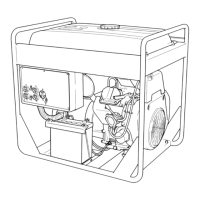What to do if my Makita G SERIES Inverter has low power?
- CCheryl AndersonJul 28, 2025
If your Makita Inverter is showing low power, check for a low battery, a blown fuse, deteriorated fuel, or a low oil level.

What to do if my Makita G SERIES Inverter has low power?
If your Makita Inverter is showing low power, check for a low battery, a blown fuse, deteriorated fuel, or a low oil level.
What to do if Makita G SERIES Inverter starter runs, but the engine won't start?
If the starter runs but the engine of your Makita Inverter doesn't start, check for a low battery, blown fuse, deteriorated fuel, fuel piping issues, or a faulty spark plug.
Why is the rotation unstable during operation of my Makita Inverter?
Unstable rotation during operation of your Makita Inverter may be due to an overload from the connected appliance or insufficient capacity of the extension cable. Please, check them.
What to do if the rotation decreased during operation of my Makita G SERIES Inverter?
Decreased rotation during operation of your Makita Inverter may be caused by overloading the connected appliance or using an extension cable with insufficient capacity. Check these components.
How to fix a Makita G SERIES when the starter won't run?
If the starter of your Makita Inverter won't run, check for a low battery or a blown fuse.
Details warranty applicability and coverage scope for emission components.
Specifies the duration of the emission component warranty.
Lists specific emission control parts included in the warranty.
Outlines the process for obtaining warranty repairs.
Lists conditions and causes that void the warranty.
Defines user's duties for maintaining warranty coverage.
Essential information on emission system maintenance and repairs.
Explains the procedure for submitting a warranty claim.
Precautions regarding gasoline, refueling, and flammables.
Guidelines for operating in ventilated areas and keeping distance from structures.
Importance of operating on a level surface to prevent spills and tipping.
Warnings about wiring, extension cords, and electric shock hazards.
Safety measures for rain, wet conditions, and electrical grounding.
Warnings about hot engines, battery handling, and bystanders.
Proper use of extension cords and disconnecting appliances.
Procedure for checking and refilling engine oil.
Guidance on selecting the appropriate engine oil type and viscosity.
Steps to check fuel level and refill with unleaded gasoline.
Instructions for correctly installing the generator battery.
Specifications for the recommended lead-acid battery.
Inspecting parts for damage, leaks, and looseness.
Ensuring a safe operating environment free from hazards.
Step-by-step guide for starting the generator engine.
How to connect and use electrical appliances with the generator.
Testing and understanding the Ground Fault Circuit Interrupter.
Procedures for safely connecting the generator to house wiring.
Managing engine speed based on load for fuel economy.
Guide on engaging and using the idle control feature.
How to verify the proper functioning of the idle control.
Steps for safely shutting down the generator engine.
General steps for safely shutting down the generator.
Understanding starting surge and running wattage for various appliances.
Information on voltage loss in extension cords and selection criteria.
Procedures for cleaning and inspecting the spark arrester.
Steps to safely remove the spark arrester for cleaning.
Routine checks to be performed before each generator use.
Scheduled maintenance tasks and intervals for optimal performance.
Step-by-step guide for changing the engine oil and filter.
Cleaning and maintenance procedures for the air cleaner element.
Steps for cleaning and setting the gap of the spark plug.
How to clean fuel strainer and replace fuel hose.
Procedure for inspecting and replacing generator carbon brushes.